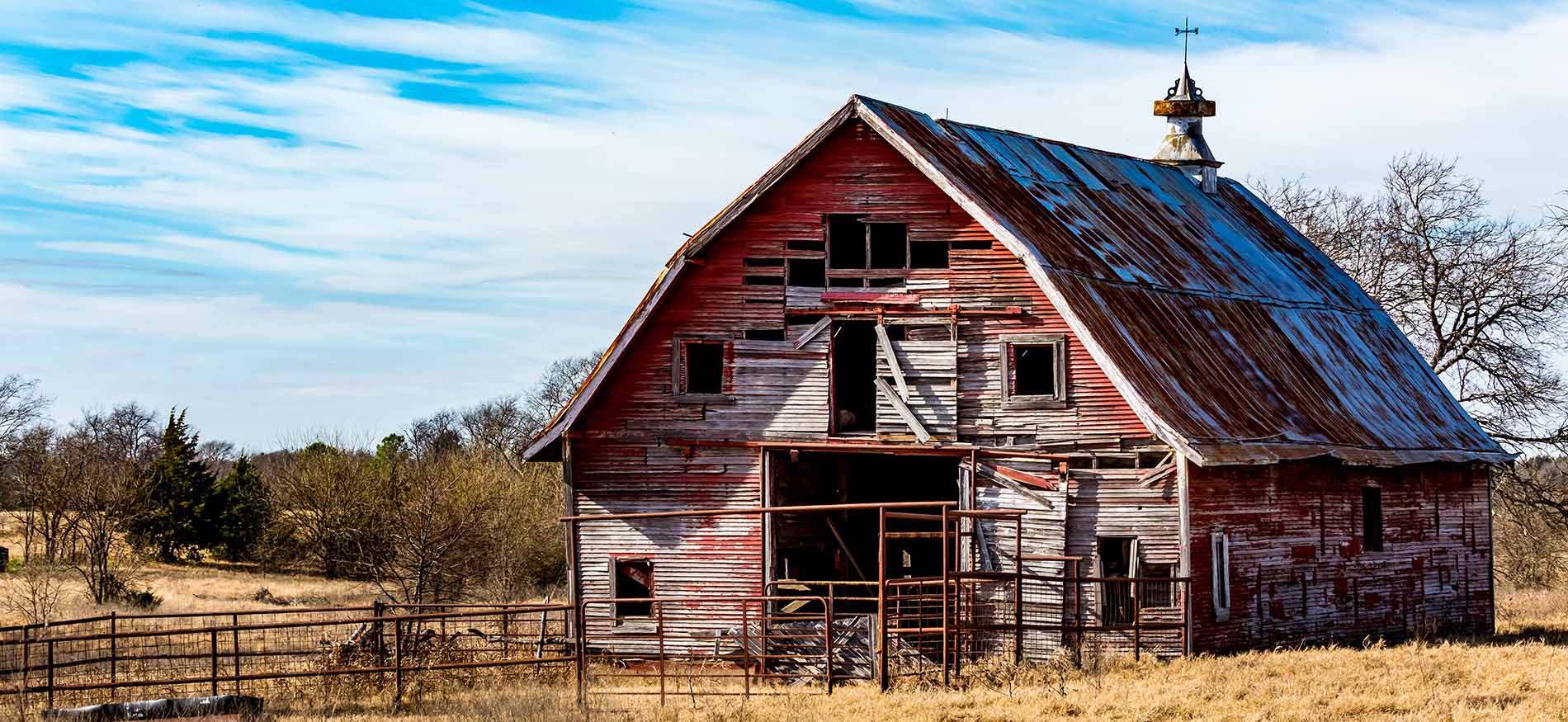While reading about Minnesota’s dairy barns collapsing under the weight of snow, I could not but think of my family’s dairy barn in Hubbard County, still standing tall after almost 100 years. The old barn is empty these days. The cavernous hayloft is silent but for the flutter and coo of pigeons, but its ridgeline is unbowed and its rounded roof has remained firm against all weather. It never had a problem with snow because it was built right.
A good copy editor would object to ‘right.’ “Don’t you mean ‘correctly’?”
“That, too,” would be my answer.
Our 21st century barns, dozens of which have collapsed this winter, are actually giant, open air sheds. Their purpose is for bovine “loafing”– a place for cows to rest, wander around a bit, and eat before they head back for yet another milking in high-tech parlors. These new style barns are collapsing because, indisputably, they were not built correctly. Their trusses were engineered too thinly or their span was too great or their spacing too wide–and so the roof couldn’t hold the snow load of this particular winter. It has been a bad winter, yes, but this is Minnesota. We’ve seen similar winters in our life times.
Because they’re still standing, our grand old dairy barns deserve our attention. Clearly they were ‘right’ for their times. In the 1930s, the average dairy herd was ten or so cows, those in a traditional barn with hayloft above, stanchions and gutters below. The high-stacked hay in the loft, at first loose, then in small, “square” bales, provided insulation above and endless ruminating below. By spring the hay was “fed down,” the hayloft floor swept clean, and the cows let out to pasture. Barn size and cow numbers rose quickly over the years, but into the 1960’s a forty cow dairy was still considered “big.” Today the average is 200 cows per farm, with that number skewed by the presence of a few massive dairies each with thousands of cows. In 1965 Minnesota had about 70,000 licensed milk producers. Today it’s just over 3,000. We have bought into the specialized, industrial model of milk production in the same way as we have with corn, wheat, and potato-growing. In return for cheap food we have put a lot of our eggs in one basket. Or under one roof. (Along with centralization has come other problems, including the depopulation of rural Minnesota not to say environmental concerns–what to do with all that manure?– but those issues deserve their own discussions.)
Clearly we can’t go back to the old days. Thomas Jefferson’s vision for America included the 160 acre, self-sufficient “general farm” perfect for one family. That ship has sailed. And it’s easy to sentimentalize about the past. If our family’s barn had a hayloft that, to a small boy, was a cathedral (and a roller skating rink and a basketball gym), its ground floor where the cows lived was a dungeon. Low ceilings. Dim lighting. Poor ventilation. Its work flow was built around a fork and shovel (trust me on this part).
Maybe the message in our modern but collapsing barns is simple: we have reached the breaking point with industrial-style farming. Maybe it’s time to get serious about a more decentralized, diversified, and sustainable approach to food production. But don’t blame our current barn troubles on the milk producers themselves. These families work harder than most anyone you know, but they are trapped in business models that have never quite worked well for agriculture. There are too many variables in farming, largest of which is the weather. Too much rain or too little. Too few hot days or too many. But too much snow? Who’d a-thunk? Actually, our grandfathers did, and their fathers, too, the ones who built barns with high roofs, steep gambrel sides, and rafters galore. Maybe these old barns are calling on us now to think–more carefully– about where we’re going with modern agriculture.
This piece was originally published in the StarTribune ( March 20, 2019).
Among his many works, Will Weaver is the author of Barns of Minnesota, and more recently Sweet Land: New and Selected Stories. Read more about him on the Contributors page.
- On Collapsing Dairy Barns, by Will Weaver - May 14, 2020

